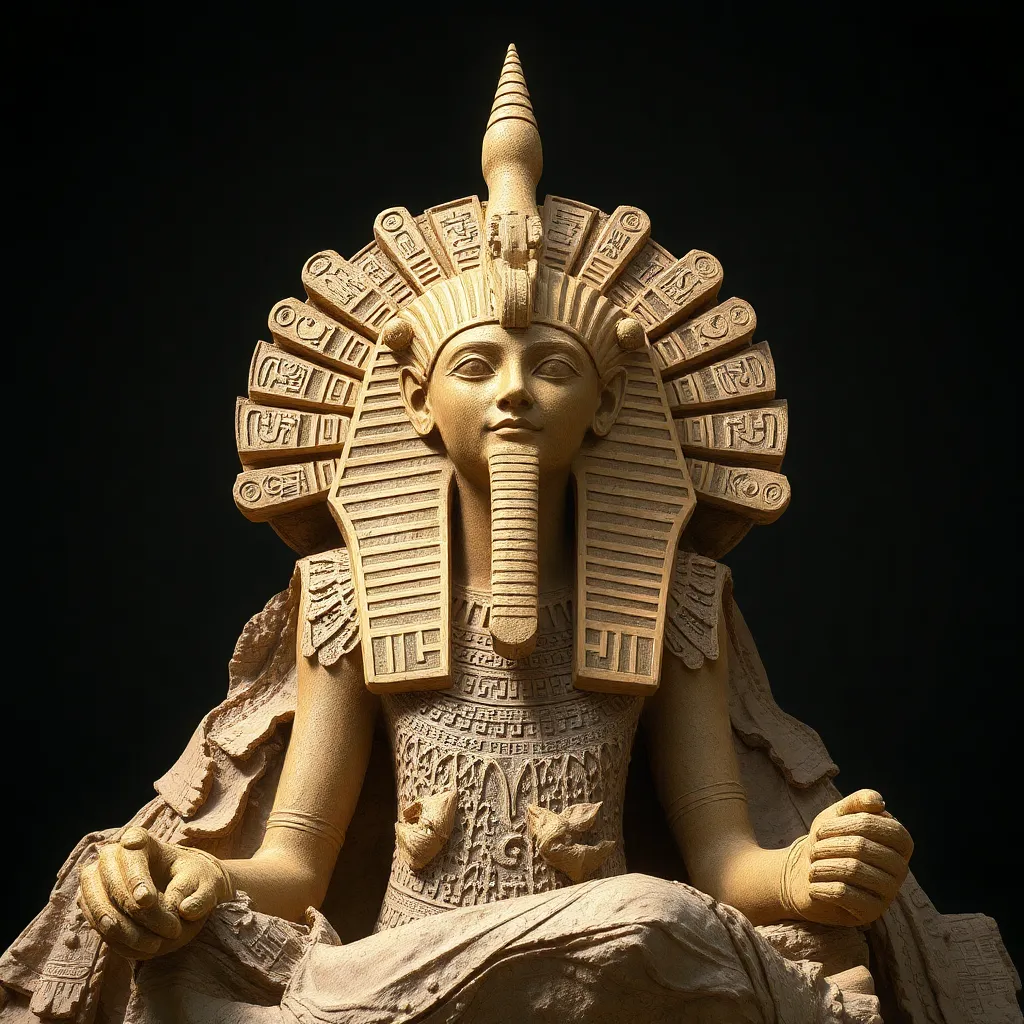The Aten and the Concept of Divine Creation
I. Introduction
The Aten is one of the most intriguing figures in ancient Egyptian religion, representing a unique aspect of divinity that emerged during a transformative period in Egyptian history. As a solar deity, the Aten came to symbolize not only the sun itself but also the concept of divine creation, which held profound significance in Egyptian culture. The purpose of this article is to explore the relationship between the Aten and the concept of divine creation, examining how this deity influenced both religious beliefs and artistic expression in ancient Egypt.
II. Historical Context of the Aten
The Aten’s prominence in ancient Egyptian religion is closely tied to the reign of Pharaoh Akhenaten, who ruled during the 14th century BCE. Akhenaten’s religious reforms marked a significant departure from traditional polytheism, as he established the worship of the Aten as the sole god, a movement known as Atenism.
This transition was radical, as it sought to simplify the complex pantheon of gods worshiped in Egypt. The Aten, often depicted as a disc emitting rays of light, became central in Akhenaten’s vision of divinity. In this new cosmology, the Aten was not merely one god among many but was elevated to the status of the ultimate creator, embodying a singular divine essence.
III. The Aten as a Solar Deity
The Aten is characterized by its association with the sun, representing light, warmth, and life. As a solar deity, the Aten is often depicted in various forms, including:
- A radiant disc with extended rays ending in hands
- Sunken reliefs showing the Aten above the royal family
- Symbolic representations in temples dedicated to worship
In art and architecture, the Aten’s representation is distinct from other solar deities such as Ra or Horus. While Ra is often associated with the sun’s power and cycles, the Aten embodies a more abstract and universal concept of divinity, transcending localized worship.
IV. The Concept of Divine Creation in Ancient Egypt
Creation myths in ancient Egyptian religion are rich and varied, often involving a pantheon of gods working together to bring the universe into existence. Key aspects of these myths include:
- The emergence of the world from chaos (Nun)
- The role of gods like Atum, who created other gods and elements of the world
- The importance of Ma’at, representing cosmic order, truth, and harmony
Creation was not a one-time event but an ongoing process that maintained Ma’at, emphasizing balance and order in the universe. The gods were seen as active participants in this process, ensuring the continuity of life and the stability of the cosmos.
V. The Aten’s Role in Creation
The Aten is depicted as a creator god in several texts and inscriptions, notably in hymns composed during Akhenaten’s reign. These texts illustrate the Aten’s role as the source of all life, emphasizing themes of nourishment and protection. For example:
- The “Great Hymn to the Aten” praises the Aten for creating the world and all its inhabitants.
- Inscriptions from Akhetaten (modern Amarna) depict the Aten providing sustenance to the pharaoh and his family.
The relationship between the Aten and humanity is portrayed as intimate and nurturing. The Aten is seen as a benevolent creator, whose rays provide life and energy to the earth. This connection extends to the natural world, with the Aten being credited for the fertility of the land and the flourishing of plants and animals.
VI. Influence on Art and Culture
The artistic representations of the Aten and the concept of creation had a profound impact on Egyptian culture during Akhenaten’s reign. Key changes included:
- Innovative artistic styles, such as naturalistic depictions of the royal family basking in the Aten’s light.
- Temples designed to be open and airy, allowing sunlight to enter and symbolize the Aten’s presence.
- Shift away from traditional depictions of gods, focusing instead on the singularity of the Aten.
These changes also influenced religious practices, as the worship of the Aten became centralized around the pharaoh and the new capital of Akhetaten. This period marked a significant departure from the established norms of Egyptian polytheism, leading to a unique cultural renaissance.
VII. Legacy of the Aten and Its Concept of Divine Creation
Despite its initial prominence, Atenism saw a decline after Akhenaten’s death. The subsequent rulers restored the traditional pantheon, and the worship of the Aten diminished. However, the legacy of the Aten and its concept of divine creation left a lasting impact on future religious movements in Egypt.
Elements of Atenism can be seen in later religious thought, particularly in the monotheistic tendencies that arose in the region. Modern interpretations of the Aten’s creation concept continue to resonate, as scholars explore its implications for understanding ancient spirituality.
VIII. Conclusion
In summary, the Aten’s significance in ancient Egyptian religion reveals a complex interplay between divinity and creation. As a solar deity, the Aten represents not only the physical sun but also a broader cosmic order that reflects the principles of life and existence in ancient Egypt. The exploration of the Aten’s role in creation highlights the profound ways in which spirituality influenced culture, art, and societal norms. Ultimately, the Aten serves as a reminder of the richness of ancient Egyptian beliefs and their enduring legacy in the study of human spirituality and cultural history.




